| Home > Policy > White Paper, Notice, Announcement > White Paper > JAPANESE GOVERNMENT POLICIES IN EDUCATION, SCIENCE, SPORTS AND CULTURE 1996 > Priorities and Prospects for a Lifelong Learning Society Chapter 2 Section 1 6 | ||
According to the 1996 MESSC survey, the majority of people who are involved in structured, ongoing learning activities, irrespective of method, want to continue those activities. Most learners also want to advance to a higher level. The number of people who indicated that they had no interest in either continuation or advancement was extremely small. Those stating that they would continue their studies but had not considered advancement to a higher level accounted for somewhere around 10% of survey participants in most learning categories. The percentage rose to around 20% or more, however, for people learning through groups, local government programs, culture centers, and extension courses at universities and other institutions of higher education ( Figure 2.12 ). The main reason given was that the purpose of learning was personal enjoyment ( Figure 2.13 ).
The 1996 MESSC survey statistics relating to the levels targeted by people enrolled in schools show that most graduate students aim for the doctorate level, while university undergraduates hope to reach the master's degree or doctorate level. There are also some people studying through university correspondence and other programs who wish to reach graduate school level.
Many people learning through methods other than enrollment in schools indicated that their present level was basic, elementary, or intermediate; the proportion stating that they had reached an advanced level was about 10% at most. In most categories the majority of respondents stated that they wished to reach an advanced level eventually. In addition, many people learning through books and videos, groups, and private-sector correspondence courses indicated that they hoped to reach the instructor or expert level.
Most of those who indicated that their aim was to acquire a specific qualification or license were enrolled in schools. Almost 50% of people learning at special training colleges and other such institutions were in this category, as were 42.3% of people studying through correspondence courses--the highest percentage for people engaged in nonschool study ( Figures 2.14 , 2.15 ).
Many people thought that they would continue their learning activities or advance to a higher level by means of their present learning method. Respondents taking this view accounted for about 50% of responses for each learning method. The majority of the remaining respondents wanted to add a new method to their existing method. Those wishing to abandon their present method and adopt a new method accounted for under 10% in the case of most learning methods, for just a few percent of responses in the case of some ( Figure 2.16 ).
Respondents were generally positive in their evaluation of their present learning method, although it must be borne in mind that the survey targeted people who were already engaged in structured, ongoing learning activities. The fact that a significant number of respondents indicated that they wished to add a new learning method to their present method suggests that diversification of learning methods at the individual level is likely.
There is a growing tendency for people wishing to continue their studies or advance to a higher level to study on weekends and at night or to study without stipulating specific days of the week or times of day. This suggests that people wish to maintain their present learning method while gaining greater flexibility with regard to time ( Figure 2.17 ).
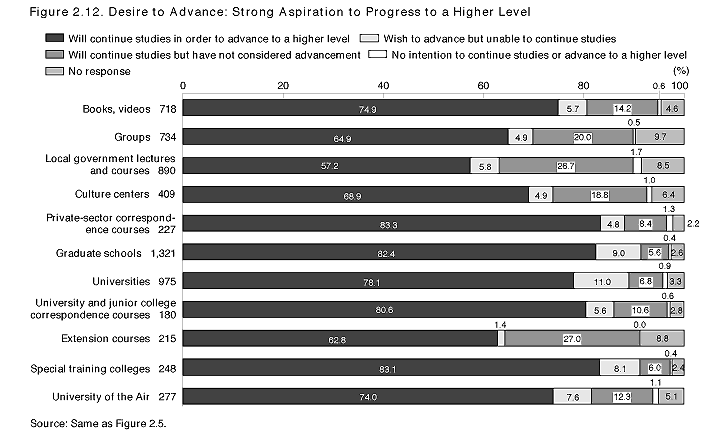
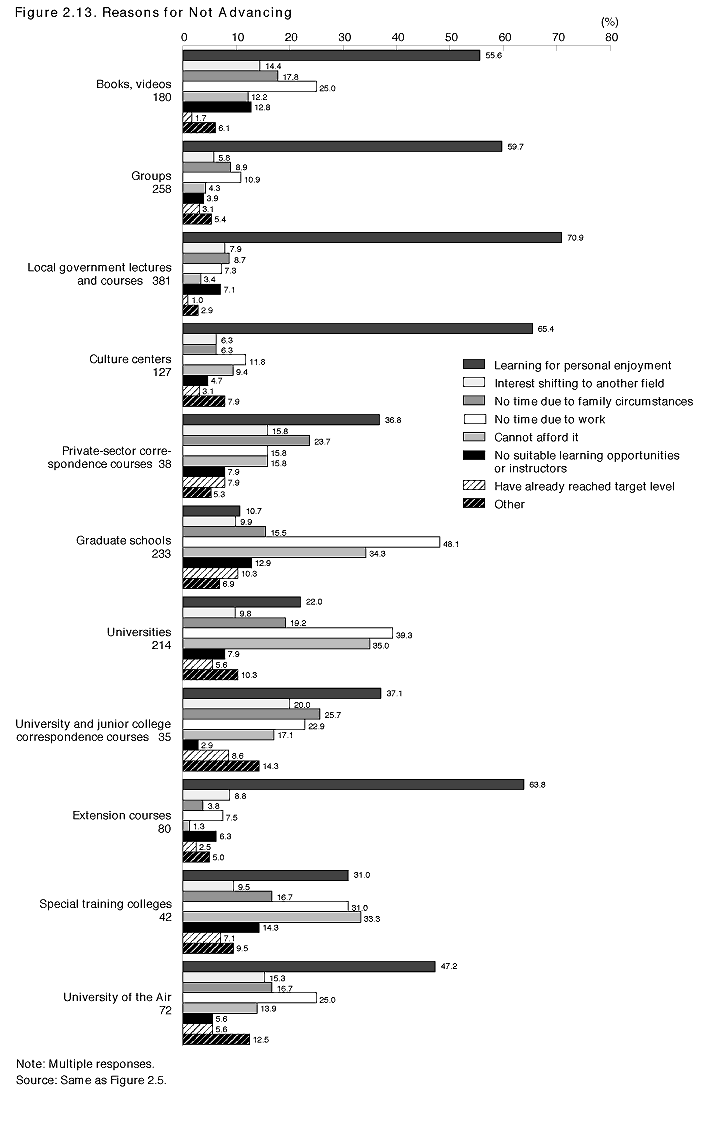
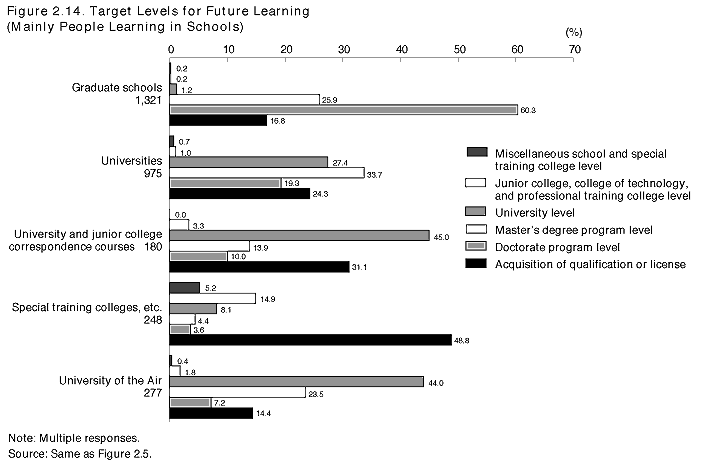
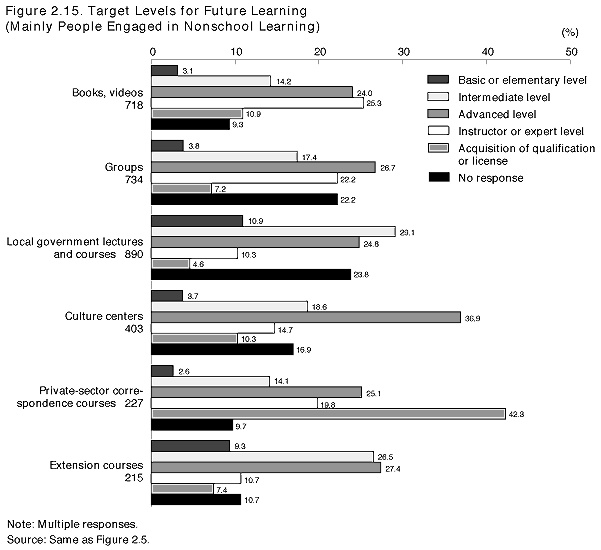
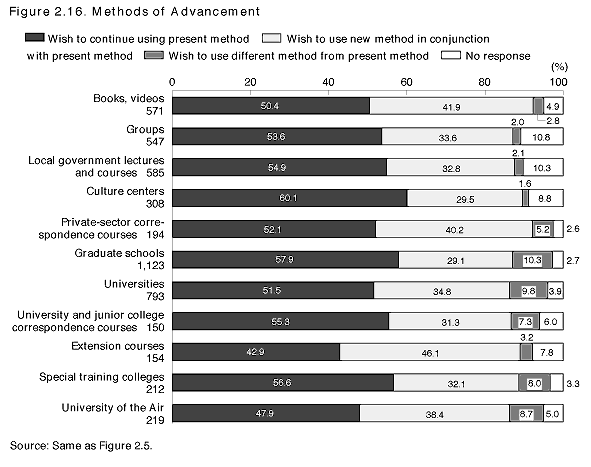
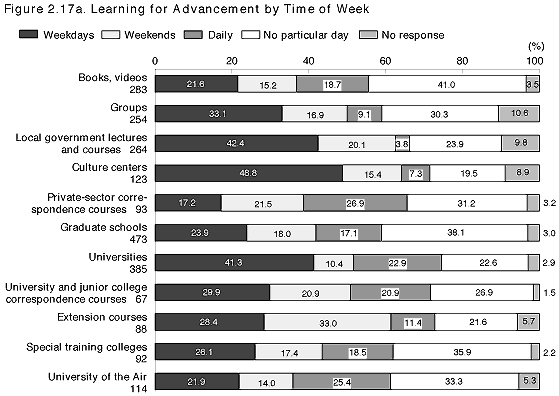
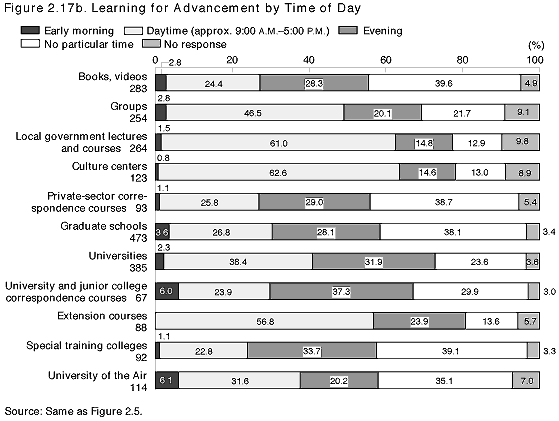
| Back to Top | MEXT HOME |